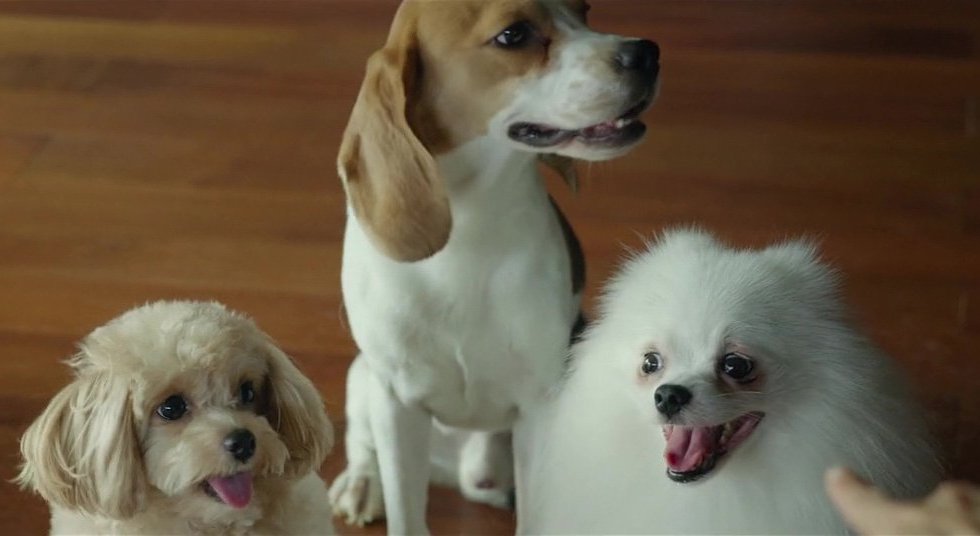Bong Joon-Ho’s 2019 black comedy thriller Parasite uses pet dogs to extend the presentation of wealth disparity and examine the human hierarchy system established within the film. The plot explores the relationship between the lower-class Kim family as they gradually infiltrate the Park family through fraudulent employment and fulfil domestic roles within the upper-class Park household. The dogs specifically being owned as pets mirrors the voluntary domestication of the Kim family, as well as practically being a resource-intensive addition to the household that is an incomprehensible expense to the Kim family. The dogs are rarely seen in the centre of frame so their background presence displays the ease with which the Park family can spend money and exhibit their wealth.
A central idea of the film is the Kim family’s dependence on the Park family for employment and subsequently, an improved quality of life. The dogs are similarly dependent on their owners and therefore hierarchically beneath the Parks but the Kim family, who also grow to be dependent on the Parks, fall even further below the pet dogs due to their low-class social identity. This further extends their class difference as an animal comes between them. Mrs Park frequently holds or cradles the dogs which demonstrates the family’s desire and importantly their capability to afford a ‘Westernised’ lifestyle, exhibited in the choice of breed.
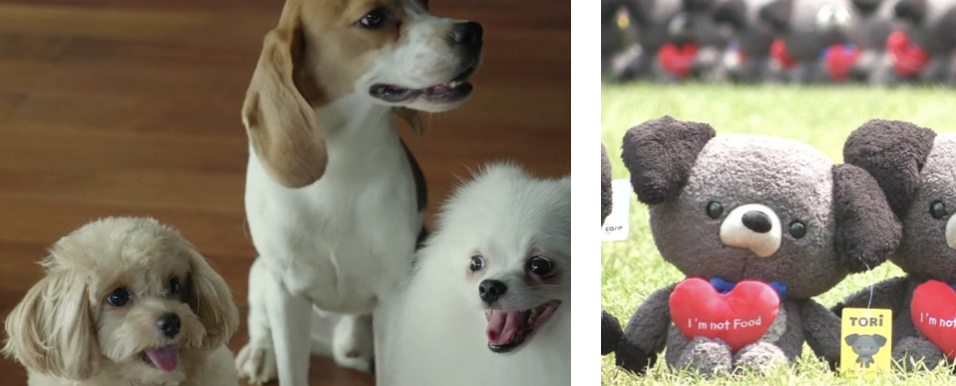
Whilst the breed is never specified, they bear a resemblance to toy dogs suggesting they are a symbol of wealth due to their popularity in modern Korean culture, rather than serving a purpose within the household, such as guard dogs. In 2018, around the time of the film’s development, there was a campaign endorsed by President Moon Jae-in in which stuffed animals were made to encourage the adoption of abandoned dogs. One of the pet dogs is a similar breed to the toy dogs in the campaign which highlights the capacity for vulnerability in this specific breed and exacerbates their dependence on the Park family.
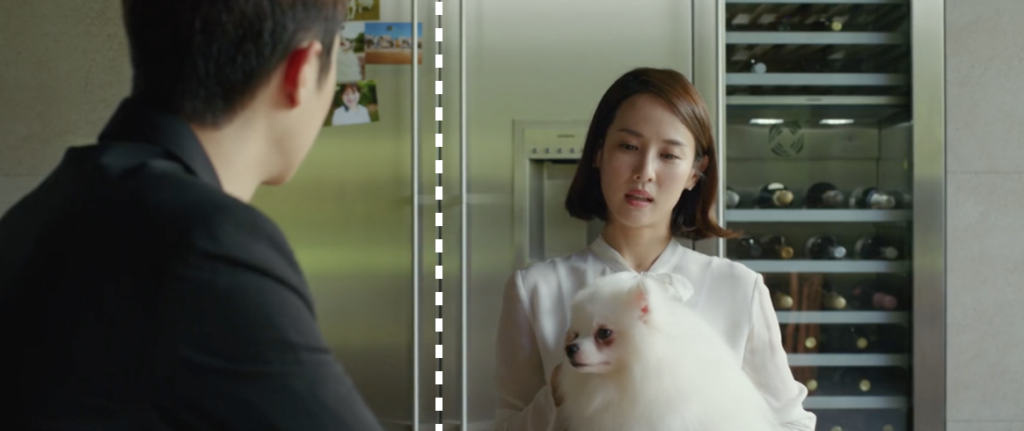
The composition of Joon-Ho’s shots use natural lines within the frame to identify boundaries between the upper and lower classes. As indicated in Figure 3, the natural line of the fridge door separates Ki-woo from Mrs Park and the dog, thus confirming the dog is equal to the Park family in terms of social hierarchy and therefore ‘superior’ to the Kim family, despite being an animal. Yet Mrs Park still asserts dominion over the dog as she picks it up and in the same way she gains dominion over Ki-woo by employing him. The camera is static which alludes to the immobility within this class structure, thus rendering the Kim family’s endeavour for social promotion almost pointless. The relationship between the dogs and the Park family is completely dependent as they rely on Mr Park, the only source of income, for survival, which speaks to their vulnerability. The specific puppy-like breeds instead of larger dogs suggest their inability to survive in the wild, which cements their dependence on Mr Park. The Kim family’s frequently flooded home and reliance on cheap, fast food suggests their vulnerability, again equating them to the dogs and how they need the Park family to survive. This dependence is what creates tension within their class difference and it is exemplified by the pet dogs.
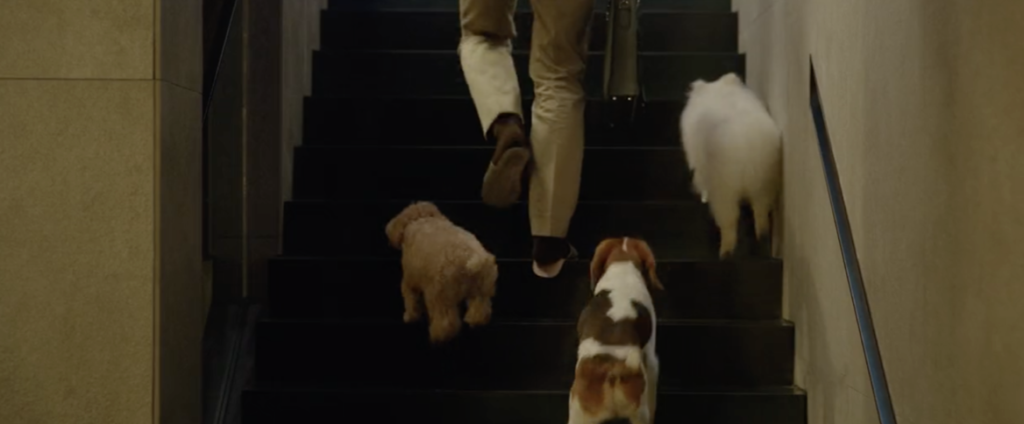
Figure 4 is another example of class separation continually being shown with the architecture of Joon-Ho’s shots. The floor-level shot places them in the expected inferior position as an animal but the camera tracks them, subverting this expectation and suggesting they are worthy to hold the centre of a frame. No visible boundary between the human and animals is shown within the frame, unlike the boundary in Figure 3, confirming the animals’ superiority over the Kim family and kinship with the Park family’s class. The action of following at Mr Park’s feet alludes to their loyalty and submission to him as their owner. The frame only shows his feet confirming their place in the hierarchal class system as both metaphorically and literally below him.
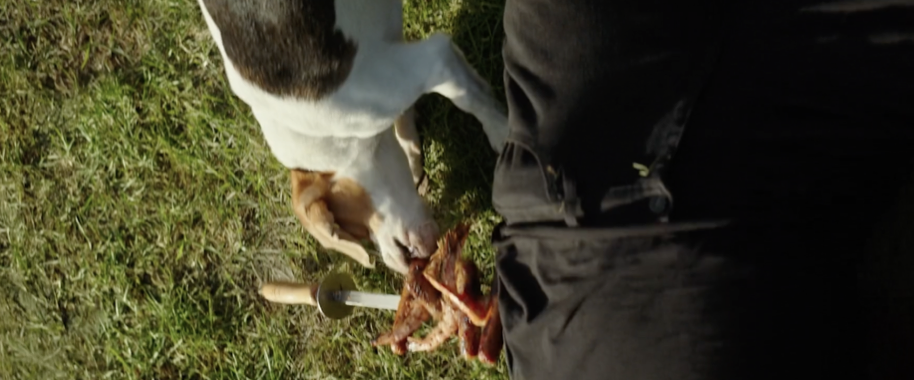
Figure 5 exemplifies how the presence of the dogs becomes important in defining the hierarchal class system at the film’s climax. The playfulness of the dog eating the meat from the skewer shifts from comedic to more sinister as the camera fluidly pans the length of Guen-se’s body without pausing to frame the dog. The smooth camera movement insinuates the normality of the dog’s action, as if reverting to primal hunger devoid of empathy is inevitable as they are still animals, despite their domestication and pampered appearance. A similar disregard for domesticity is reflected in Mr Kim’s gruesome retaliation, as if the only response to domestication is the reversion to primal instinct. Despite previously being made synonymous with the Park family through shot composition, their innate animality is likened to the instinctual reaction of Mr Kim through the camera movement. Parasite suggests that the dogs are an object and a beneficiary of the hierarchal human system that the film explores as they are protected by the Park family whilst simultaneously being an exhibition of their wealth. The choice of pet dogs is ironic as these pampered dogs who are fed organic food and carried around become a symbol of voracity, disrupting the hierarchal system in this act and rendering it futile by reverting to their fundamental animal nature.
Joon-Ho, Bong, dir. Parasite (CJ Entertainment, 2019)
Bibliography
Figure 1, 3-5: Joon-Ho, Bong, dir. Parasite (CJ Entertainment, 2019)
Figure 2: ‘South Korea’s First Dog Is “Not Food” as Campaign Is Launched’. 2018. Sky News. <https://news.sky.com/story/south-koreas-first-dog-is-not-food-as-campaign-is-launched-11439582> [accessed 10 January 2024]
